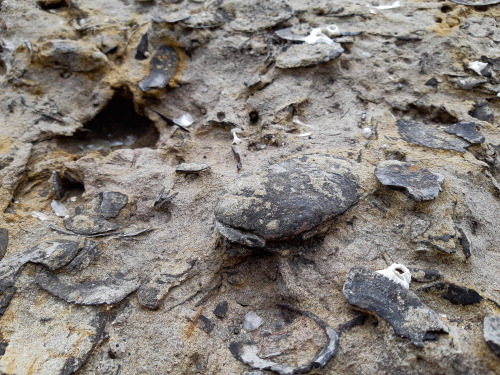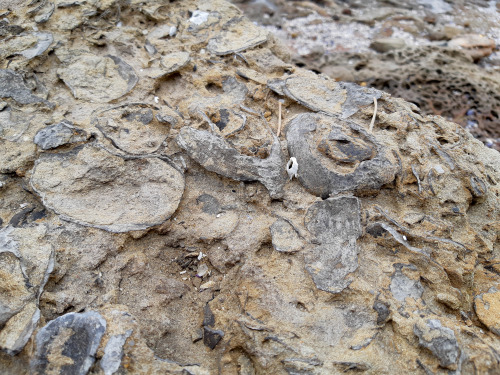This Wild Red Shouldered Hawk That Visits Our Nature Center Had A Brief Cleaning Session After Breakfast
This wild red shouldered hawk that visits our nature center had a brief cleaning session after breakfast
More Posts from Sawgrassnaturecenter and Others

Tomorrow an incredible natural phenomenon known as the super blood moon lunar eclipse will take place at 5:45AM EST. “In the United States, the total eclipse will begin at 7:11 a.m. ET and end at 7:26 a.m. ET, but will be partially visible from 5:45 a.m. ET to 8:52 a.m. ET,” (https://www.cnn.com/2021/05/25/world/may-full-moon-lunar-eclipse-scn/index.html). A lunar eclipse is described as an event where the Earth’s shadow blocks the sun’s light that reflects off the moon.
Celestial events like a lunar eclipse have long caught the attention of humans throughout history. There are also many myths and legends about the full moon affecting human behavior. Whether it’s just a really cool event to watch, or something more, what is the connection between the moon and us?
Scientifically speaking, the moon has a gravitational pull on the Earth’s oceans. The moon’s pull is what is responsible for creating the tides. The tide is essentially the rising and lowering of the ocean against the shore. The change in period between higher and lower local ocean levels is referred to as high and low tide. As the moon circles the Earth, it’s gravitational pull gets greater and weaker in the areas it moves closer to or further from. The greater the pull, the higher the tide, and vice-versa.
Find your local high and low tide here: https://tidesandcurrents.noaa.gov/map/index.html?region=Florida/
In nature, many animal species have oriented themselves to respond to high and low tide. For example, sea turtles will come up to shore during a high tide to lay their eggs. Since other animal species have developed behavior that responds to certain aspects of the moon, it isn’t too crazy to believe that at some point down the evolutionary line, humans may have done something similar. However, there aren’t too many studies to prove this.
While many studies have been done on how the Full Moon can affect sleep cycles in humans (https://pubmed.ncbi.nlm.nih.gov/25266502/), this might be better chalked up to the slow adaptation to artificial light in the 21st century. And while there are many who believe that hospitals, emergency rooms, and even classrooms get crazier than usual on the day of a full moon, there isn’t much to prove that either. A better question to ask might be, is the superstition around the full moon becoming a self-fulfilling prophecy? Let us know what you think!


In honor of National Wildlife Day, we took out our native Florida gator for an educational program. Florida gators are considered a keystone species. That means they’re responsible for establishing an ecosystem/habitat for several other species of animals to inhabit as well. Without gators, Florida’s animal ecology would be in serious trouble.
Note: licensed and trained professionals are responsible for handling all wild animals. Please do not try this at home.

Fun Fact: The famous Florida citrus trees are NOT native to Florida. Citrus trees were planted by mid-century Spanish explorers before they became the state's featured fruit. https://www.visitflorida.com/en-us/eat-drink/facts-about-florida-citrus-oranges.html

Can beer help save the bees? Check out this neat article we found: https://learn.kegerator.com/hops-help-bees/
Yknow the thing where red pandas just lay down on a branch and let their legs hang and they’re just like vibing
Anybody else spend like two hours a day thinking about how baby possum ears look like a half moon cookie? It can’t be just me





Ancient sea bottom exposed along a modern seaside rocky platform. This immense amount of fossilized shells is preserved in ~250 million year old sea sediments which would have been a feeding grounds for all these bivalves.
South coast, NSW, Australia.
This ultra-black fish has evolved to be practically invisible in the darkest depths of the ocean, and the way it sucks in light could be useful for engineers.

Peepers says hello to Fall

This is a reminder that tortoises can NOT swim like other turtles. If tortoises are dropped in water, they will drown. You can tell the difference between a swimming turtle and a tortoise by looking at their feet. Turtles will have webbed feet that help them swim, or flippers. Tortoises do not have webbed feet.
-
 fluffydogbutts reblogged this · 3 years ago
fluffydogbutts reblogged this · 3 years ago -
 a-charaid liked this · 3 years ago
a-charaid liked this · 3 years ago -
 thrymr reblogged this · 3 years ago
thrymr reblogged this · 3 years ago -
 runeswords liked this · 3 years ago
runeswords liked this · 3 years ago -
 luxraylauren liked this · 3 years ago
luxraylauren liked this · 3 years ago -
 ephraim reblogged this · 3 years ago
ephraim reblogged this · 3 years ago -
 hay-is-gay liked this · 3 years ago
hay-is-gay liked this · 3 years ago -
 rival-rook reblogged this · 3 years ago
rival-rook reblogged this · 3 years ago -
 inkfinale reblogged this · 3 years ago
inkfinale reblogged this · 3 years ago -
 inkfinale liked this · 3 years ago
inkfinale liked this · 3 years ago -
 theiform reblogged this · 3 years ago
theiform reblogged this · 3 years ago -
 theiform liked this · 3 years ago
theiform liked this · 3 years ago -
 ibrithir-was-here liked this · 3 years ago
ibrithir-was-here liked this · 3 years ago -
 binomist reblogged this · 3 years ago
binomist reblogged this · 3 years ago -
 where-it-flows reblogged this · 3 years ago
where-it-flows reblogged this · 3 years ago -
 radio-charlie reblogged this · 3 years ago
radio-charlie reblogged this · 3 years ago -
 radio-charlie liked this · 3 years ago
radio-charlie liked this · 3 years ago -
 cundtcake reblogged this · 3 years ago
cundtcake reblogged this · 3 years ago -
 agent-plaguemask reblogged this · 3 years ago
agent-plaguemask reblogged this · 3 years ago -
 evening-lilacs liked this · 3 years ago
evening-lilacs liked this · 3 years ago -
 god1eater liked this · 3 years ago
god1eater liked this · 3 years ago -
 nostalgic-breton-girl liked this · 3 years ago
nostalgic-breton-girl liked this · 3 years ago -
 spatialheather liked this · 3 years ago
spatialheather liked this · 3 years ago -
 dru-reblogs-stuff reblogged this · 3 years ago
dru-reblogs-stuff reblogged this · 3 years ago -
 p4rt2cle reblogged this · 3 years ago
p4rt2cle reblogged this · 3 years ago -
 p4rt1cle liked this · 3 years ago
p4rt1cle liked this · 3 years ago -
 corvus-cervus liked this · 3 years ago
corvus-cervus liked this · 3 years ago -
 druidx liked this · 3 years ago
druidx liked this · 3 years ago -
 anchorhcld liked this · 3 years ago
anchorhcld liked this · 3 years ago -
 sufferingplant reblogged this · 3 years ago
sufferingplant reblogged this · 3 years ago -
 glassballdinosaurs reblogged this · 3 years ago
glassballdinosaurs reblogged this · 3 years ago -
 boizangado liked this · 3 years ago
boizangado liked this · 3 years ago -
 antisocial-transfag reblogged this · 3 years ago
antisocial-transfag reblogged this · 3 years ago -
 black-mountain-radio liked this · 3 years ago
black-mountain-radio liked this · 3 years ago -
 sparkles-rainbows-severed-heads reblogged this · 3 years ago
sparkles-rainbows-severed-heads reblogged this · 3 years ago -
 violetsandshrikes reblogged this · 3 years ago
violetsandshrikes reblogged this · 3 years ago -
 spaceagesadness reblogged this · 3 years ago
spaceagesadness reblogged this · 3 years ago -
 notacolorfullesbian liked this · 3 years ago
notacolorfullesbian liked this · 3 years ago -
 butchghostbird reblogged this · 3 years ago
butchghostbird reblogged this · 3 years ago -
 supersmashfighter liked this · 3 years ago
supersmashfighter liked this · 3 years ago -
 whiskeytiddies reblogged this · 3 years ago
whiskeytiddies reblogged this · 3 years ago -
 zackaran reblogged this · 3 years ago
zackaran reblogged this · 3 years ago -
 iiitscdgclxrd666iiixmcxxlisms reblogged this · 3 years ago
iiitscdgclxrd666iiixmcxxlisms reblogged this · 3 years ago -
 therealmabel liked this · 3 years ago
therealmabel liked this · 3 years ago -
 ilovedtoomuchdidnti liked this · 3 years ago
ilovedtoomuchdidnti liked this · 3 years ago -
 australianpenguini liked this · 3 years ago
australianpenguini liked this · 3 years ago -
 forestfeeling reblogged this · 3 years ago
forestfeeling reblogged this · 3 years ago

The Sawgrass Nature Center (SNC) is a nonprofit located in South Florida. Our mission is to educate the public about native wildlife and environmental stewardship. We also rescue, rehabilitate, and release injured, orphaned, or sick wildlife. Animals that cannot be released due to permanent injuries or disabilities are given a forever home on site with animal keepers that know how to properly care for them. We are able to operate due to donations from generous patrons. If you are interested in helping us further our mission, check us out at: https://sawgrassnaturecenter.org/
202 posts